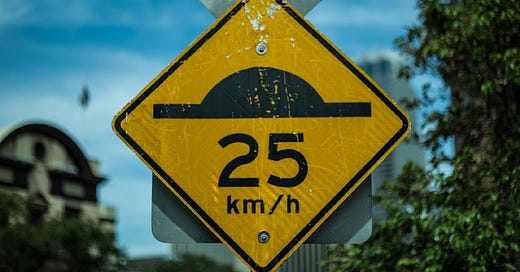The Story Writer’s Path
Try these two techniques to get you over the hump

I teach writing workshops regularly with an array of amazing students. My favorite thing is when I learn something new from one of them. That happened recently — and what I learned is a great system for organizing your thoughts around a piece of writing.
And it also happens to be a great block-buster.
It’s called cubing and it’s a linear, fairly analytical practice. Which is why I’ve paired it with another exercise that is looser and freer. That process is known by a variety of names, including mind-mapping, spidering, webbing, and my favorite, clustering.
Both of these are excellent pre-writing exercises. You can use them separately or together, which is a nice pairing. Let’s talk about the value of pre-writing exercises for a minute.
Pre-writing
Often writers get an idea for a project and in that first blush of enthusiasm, they jump right in to putting words on the page. But once the excitement fades, they get stuck because they don’t know where they’re going next.
For this reason, I always encourage writers to know where they’re going. I’m certain at least half, if not more, of all writing blocks result from not knowing where to go next in the project.
Ernest Hemingway famously solved this problem by ending each writing session in the middle of a sentence, so he’d know exactly where to pick up the next day. (I’ve tried this, but too often found I can’t remember what thoughts I had for the sentence. Oh well.)
Pre-writing exercises can help you know where you’re going. By taking notes or completing these processes, you’ll get your brain engaged and working on the next thing you need to write. And that helps enormously.
Cubing
The practice of cubing as a writing method is a systematic, focused pre-writing technique that can help you clarify what you want to write about. It works for fiction and non-fiction. It will help you to dive deeper into your chosen topic and it can also smash writing blocks because it gives you new ways to look at what you want to write about.
Okay. So, a cube has six sides, right? And thus cubing has six aspects that you’ll explore. Begin by writing your topic at the top of the page. It can be an idea, an event, a character, a scene, a problem, or just about anything. From there, you’re going to examine it through six lenses.
Six aspects
Describe it
Do an objective description. How would a journalist describe the person, place, or thing?
Compare it
What is alike? What is it not alike?
Associate it
What does it remind you of?
Analyze it
What is it made up of? Can you break it down into disparate elements and put it back together again?
Apply it
How is it used? Who uses it? Where? Why?
Argue for or against it
Make the case for or against it.
Once you’ve completed all these steps, take a look at what you’ve written. Do you see any patterns? Any important points? What ideas or descriptions capture your attention?
You can take the concept even further, adding on such categories as illustrate it, question it, evaluate it, change it, solve it, and more. This technique really does have a lot of variations, all of which you can use to your story-writing advantage.
Be aware that not all of the six sides of the cube will net you as much information as others. Some might not be useful at all. My experience with this exercise, though, is that it jars me out of preconceived ways of thinking. And if even one side of the cube presents me with new material to apply to my topic, it’s time well spent.
Clustering
Clustering is quite different and utilizes your whole brain much more so than cubing. The process is simple. Start with a blank sheet of paper, the bigger the better. Write your topic (or character, or problem, or place you want to describe or whatever) in the middle of the paper and circle it. Now start writing down thoughts that come to mind on lines out from the center, like spokes of a wheel, keeping each line full of related ideas. Keep adding lines and soon you’ll see connections which you can join together with arrows or more lines.
You can also do clustering online. Google Mind-mapping and you’ll find sites that offer this service, including this one. But to my mind, it’s better to go analog on this one. I love seeing a finished mind-map covered with lines, arrows, notes, and doodles. It’s a project ready to burst forth into the world!
This is, in a way, a more expansive method of making a list or an outline and it has the great advantage of letting see your entire project at one glance. Plus, it will also show you associations you might not have thought of previously.
Try using cubing and clustering together, perhaps starting with cubing and then using your six sides of the cube as individual spokes for clustering. From there you will see all kinds of new relationships.
Whether you choose cubing or clustering or some other pre-writing exercise, you’ll find these worthy activities to crush writer’s block.



